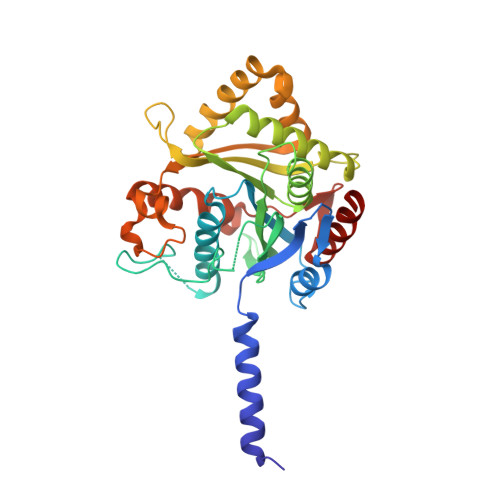The hypervariable region of atlastin-1 is a site for intrinsic and extrinsic regulation.
Kelly, C.M., Byrnes, L.J., Neela, N., Sondermann, H., O'Donnell, J.P.(2021) J Cell Biol 220
- PubMed: 34546351
- DOI: https://doi.org/10.1083/jcb.202104128
- Primary Citation of Related Structures:
6XJN, 6XJO - PubMed Abstract:
Atlastin (ATL) GTPases catalyze homotypic membrane fusion of the peripheral endoplasmic reticulum (ER). GTP-hydrolysis-driven conformational changes and membrane tethering are prerequisites for proper membrane fusion. However, the molecular basis for regulation of these processes is poorly understood. Here we establish intrinsic and extrinsic modes of ATL1 regulation that involve the N-terminal hypervariable region (HVR) of ATLs. Crystal structures of ATL1 and ATL3 exhibit the HVR as a distinct, isoform-specific structural feature. Characterizing the functional role of ATL1's HVR uncovered its positive effect on membrane tethering and on ATL1's cellular function. The HVR is post-translationally regulated through phosphorylation-dependent modification. A kinase screen identified candidates that modify the HVR site specifically, corresponding to the modifications on ATL1 detected in cells. This work reveals how the HVR contributes to efficient and potentially regulated activity of ATLs, laying the foundation for the identification of cellular effectors of ATL-mediated membrane processes.
Organizational Affiliation:
Department of Molecular Medicine, College of Veterinary Medicine, Cornell University, Ithaca, NY.
















